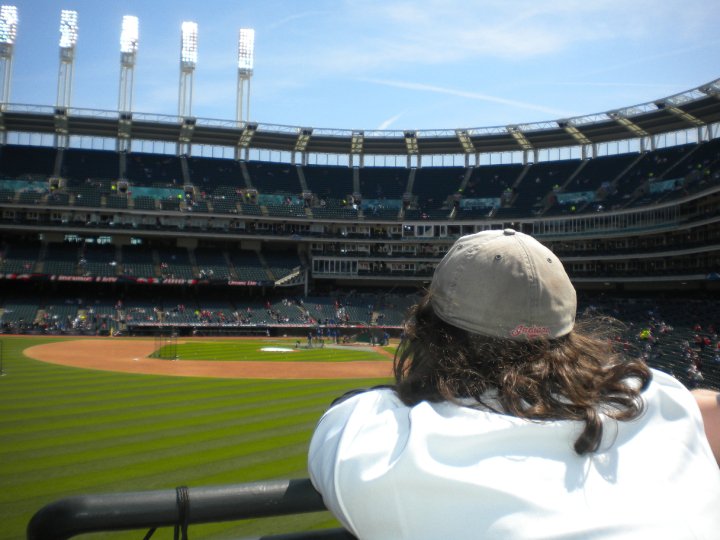 It’s no secret that the Indians need starting pitching. Not one regular starting pitcher from the 2012 team qualified as being above replacement level. Justin Masterson regressed last season. Ubaldo Jimenez does not appear to be the answer that the Indians thought he would be. Zach McAllister showed promise, but gradually morphed back into an average starter. Corey Kluber missed some bats, but also hit too many barrels. Various other guys like David Huff, Jeanmar Gomez, and Carlos Carrasco cannot be counted on.
It’s no secret that the Indians need starting pitching. Not one regular starting pitcher from the 2012 team qualified as being above replacement level. Justin Masterson regressed last season. Ubaldo Jimenez does not appear to be the answer that the Indians thought he would be. Zach McAllister showed promise, but gradually morphed back into an average starter. Corey Kluber missed some bats, but also hit too many barrels. Various other guys like David Huff, Jeanmar Gomez, and Carlos Carrasco cannot be counted on.
This past season, the Indians entered the fourth inning trailing in 77 of their 162 games. Extend that out to the beginning of the fifth inning and the Indians trailed in 86 of 162 games. Of those 77 games where the Indians were behind after three innings, they won just 12. Of those 86 games where the Indians were behind after four innings, they won just 13. To simplify it even further, the Indians were behind 48 times after one inning this season. They went 7-41 in those games.
With a lead after three innings, the Indians went 41-15. With a lead after four innings, the Indians went 44-10. In tie game situations after three and four innings, the Indians went 15-14 and 11-11, respectively. The moral of this story? The Indians need starting pitching badly. In today’s specialized MLB, and with the Indians left handed-heavy lineup that is easy to match up against, playing from in front is essential. The Indians were buried far too often by their starters last season and it clearly cost them.
The offense was at least adequate, in fact, rating higher than the Tigers in some metrics. The bullpen was clearly the strength of the team. But, the job description for the offense and for the bullpen drastically changes when constantly playing from behind. The offense is under more pressure to succeed and the Indians were not a big inning team. Of the 1,459 innings of the 2012 season, the Indians scored three or more runs in just 72 of them. As far as the bullpen goes, the Indians were 52-8 when leading after six.
Obviously, all of this leads to the main objective of the offseason – improving the starting rotation. It’s not an easy task. Major League starting pitching is always available, but quality starting pitching is not easy to obtain. There are hundreds of Zach McAllisters and Ubaldo Jimenezes out there in the player pool, some off in
All in all, it makes Chris Antonetti’s job very difficult. The Indians should have some money to spend this offseason. By declining the options of Travis Hafner and Roberto Hernandez, they freed up over $15M. Assuming Grady Sizemore, Casey Kotchman, and Jack Hannahan are gone, that opens up another $9M. Carlos Santana, who signed a contract extension this year, will only make $750,000. Right now, the Indians have just $13M in guaranteed contracts, with Shin-Soo Choo and Chris Perez probably making somewhere near $15M, on the high side, combined. Justin Masterson made $3.825M in 2012 and will get a raise, but nowhere near what he could have gotten had he repeated his 2011 season. Rafael Perez made just over $2M in 2012 and spent the entire season hurt. He may even see a slight decline or not return to the club at all. Joe Smith made $1.75M and is now in his final year of arbitration. He should see a slight raise, but below $3M. Other than Lou Marson and Tony Sipp, and to a lesser extent, Matt LaPorta, who are in their first year of arbitration eligibility, the rest of the ballclub should make near the league minimum.
A reasonable estimate for guaranteed contracts once the dust settles is somewhere around $42-45M. The Indians 2012 payroll was around $65M. Consider that trades of Choo (~$7-8M), Cabrera ($6.5M), and Perez (~$7M) could, reasonably, wipe out over $20M from the payroll if all three were to go. Those are my arbitration estimates for Choo and Perez. Tim Dierkes of MLBTradeRumors lists Choo at $7.9M and Perez at $7.2M.
Therefore, for the purposes of this column, I’m obviously leaving out guys like Zack Greinke, Anibal Sanchez, Kyle Lohse, and Hiroki Kuroda. Greinke will probably see a nine-figure contract, Sanchez and Lohse somewhere in the $12-15M per season range, and Kuroda would have no interest in coming to
Here are my top five targets for starting pitching help this offseason:
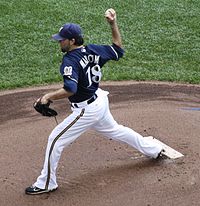 1. Shaun Marcum, RHP, Free Agent: Marcum is right in the Indians wheelhouse. He’s a guy who battled injury last season and previously had Tommy John surgery so he’s not looking for anything more than a three-year deal at most, and will probably have to settle for a two-year deal. Furthermore, because Marcum is in the third-tier of free agent starters, behind guys like Zack Greinke, Anibal Sanchez, Edwin Jackson, Ryan Dempster, and Kyle Lohse, the Indians could swoop in and snag him with relative ease, unless he’s waiting to see how the market shakes out.
1. Shaun Marcum, RHP, Free Agent: Marcum is right in the Indians wheelhouse. He’s a guy who battled injury last season and previously had Tommy John surgery so he’s not looking for anything more than a three-year deal at most, and will probably have to settle for a two-year deal. Furthermore, because Marcum is in the third-tier of free agent starters, behind guys like Zack Greinke, Anibal Sanchez, Edwin Jackson, Ryan Dempster, and Kyle Lohse, the Indians could swoop in and snag him with relative ease, unless he’s waiting to see how the market shakes out.
Who is he?: It feels like Marcum’s been around forever, but the soon-to-be 31-year-old righty has only thrown 916 innings in the Majors. Despite only throwing in the upper 80s, two of Marcum’s full seasons have been years of over 150 strikeouts, due to a five-pitch mix.
Appeal?: One of Marcum’s best traits is his command, walking just 2.77 batters per nine innings in his career. He’d be a low-risk, short-term signing and does have two seasons of 195+ innings to his name.
Red flags?: The Indians would be signing damaged goods, so health is always a concern.
Verdict?: There are a lot of things about Marcum that fit perfectly in this market and on this team. As long as he stayed healthy, he’s a reliable pitcher who rarely gets knocked around the ballpark because he has so many pitches at his disposal. He has pitched in the American League and may be looking to go back there, since having to hit in the National League isn’t conducive to the injury problems he has had.
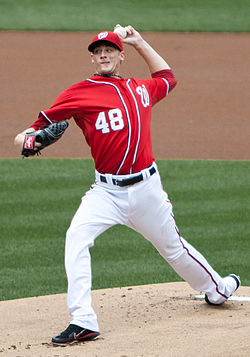 2. Ross Detwiler, LHP, Washington: You’re probably asking yourself, “Who the f is Ross Detwiler?” That’s a fair question. Detwiler, who will turn 27 in March, came on the scene this season at the back of the Nationals rotation and did a fine job, posting a 3.40 ERA in 164 innings. The reason he might be available is because the Nationals already have Gio Gonzalez, Stephen Strasburg, and Jordan Zimmermann, and are reportedly players for Greinke in free agency. Detwiler is in his first year of arbitration eligibility and the Nationals may prefer to use a fifth starter who will make less money.
2. Ross Detwiler, LHP, Washington: You’re probably asking yourself, “Who the f is Ross Detwiler?” That’s a fair question. Detwiler, who will turn 27 in March, came on the scene this season at the back of the Nationals rotation and did a fine job, posting a 3.40 ERA in 164 innings. The reason he might be available is because the Nationals already have Gio Gonzalez, Stephen Strasburg, and Jordan Zimmermann, and are reportedly players for Greinke in free agency. Detwiler is in his first year of arbitration eligibility and the Nationals may prefer to use a fifth starter who will make less money.
Who is he?: Detwiler is a 6’5” lefty, which would give the Indians rotation a little bit of balance. He’s a fastball/sinker, curveball, changeup pitcher who pitches to contact, but did have a groundball percentage above 50% last season. Over the last two seasons, covering more than 230 innings, Detwiler has walked less than three batters per nine innings.
Appeal?: There’s a lot to like about Detwiler. He’s a guy who still seems to be maturing and growing as a pitcher and he adds another dimension to the Indians rotation. He’s also under club control for three more seasons.
Red flags?: Not necessarily a red flag, but it’s hard to see where the Indians and Nationals would match up. The Nationals have a good, young shortstop in Ian Desmond and are stocked in the outfield, along with having one the game’s best bullpens. Also, it’s not certain that Detwiler is available. For the right offer, though, he could certainly be acquired, as the Nationals have tons of pitching.
Verdict?: Detwiler would be an excellent addition to the rotation. The hard part is finding a match, if he’s even available, but he’s a guy who is certainly on my radar.
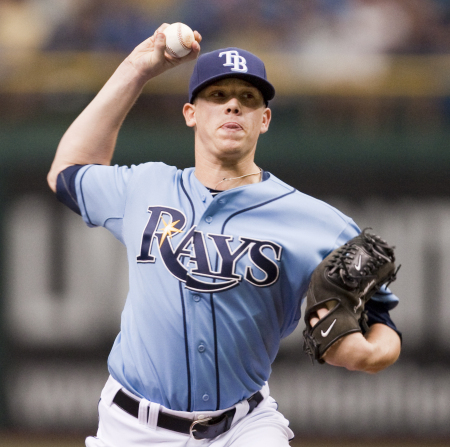 3. Jeremy Hellickson, RHP,
3. Jeremy Hellickson, RHP,
Who is he?: Hellickson will turn 26 during the first week of the 2013 season. He’s thrown 402 Major League innings with an ERA of 3.06. He’s not a strikeout pitcher, averaging 6.13 strikeouts per nine innings, but has one of the game’s most underrated changeups.
Appeal?: The best thing about Hellickson is that, for a cost-conscious team like the Indians, he’s under contractual control until 2017. The one downfall to his arbitration years is that he is a Scott Boras client.
Red flags?: There are some red flags with Hellickson that would be reasons why the Rays would look to move him. For one, as mentioned above, he is not a strikeout pitcher. He has lived dangerously, posting left on base percentages over 80% the last two seasons and overachieving in terms of other ERA-type metrics. To be more specific, the metrics FIP (fielder independent pitching, considers only pitcher-related plays, strikeouts, walks, home runs, etc.), tERA (stands for true ERA, an ERA predictor based on “batted ball types”, groundball, fly ball, line drive, etc.), and SIERA (stands for skill-interactive ERA, takes into account strikeouts, walks, and batted ball types) all categorize Hellickson as “below average” in relation to the rest of the league. Not to mention, the cost it would be to acquire him via trade.
Verdict?: It’s been two seasons of Hellickson bucking these trends and maybe he’s just some kind of enigma. He has a two-year track record of Major League success, especially in a tough division to pitch in. Also, he’s under control for a long time and that’s very important. The Indians, presumably, could cut payroll and add a quality starter all in one trade if something were to get done.
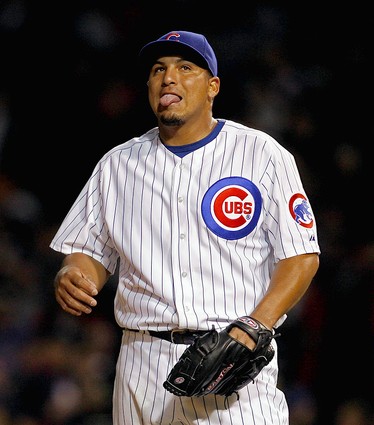 4. Carlos Zambrano, RHP, Free Agent: The malcontent right hander will turn 33 during the season, but there’s a chance that there’s still something left in his arm. His velocity and command have waned a little bit over the last couple of seasons, which is definitely a reason to be concerned. With confidence in him extremely slim around the league, he may stay unsigned for a while and be forced to accept whatever offer comes his way. In true Indians fashion, he is a guy who could be acquired for a low base salary and reachable incentives.
4. Carlos Zambrano, RHP, Free Agent: The malcontent right hander will turn 33 during the season, but there’s a chance that there’s still something left in his arm. His velocity and command have waned a little bit over the last couple of seasons, which is definitely a reason to be concerned. With confidence in him extremely slim around the league, he may stay unsigned for a while and be forced to accept whatever offer comes his way. In true Indians fashion, he is a guy who could be acquired for a low base salary and reachable incentives.
Who is he?: Zambrano is a far cry from the dominant force he was with the Cubs in the early 2000s. Lately, he’s bounced back and forth between the rotation and the bullpen, while struggling with command and confidence. He’s a very emotional guy, generally in a negative way.
Appeal?: Well, in all honesty, he’s the kind of guy that the Indians want to take a chance at. He’s only two years removed from posting a solid season going 11-6 with a 3.33 ERA with the Cubs. He’s the reclamation project that the Indians are known for. Furthermore, a manager like Terry Francona should be able to keep Zambrano under control, having dealt with a lot of different personalities in
Red flags?: There are a lot of them. He could potentially be a reincarnation of the Fausto Carmona/Roberto Hernandez we’ve dealt with in recent years. A guy with a lot of talent who can’t keep it together.
Verdict?: He’s worth a shot. There’s a chance that he blows up before he even gets started, but there’s also a chance that he manages to throw 170 quality innings. He’d be in a low pressure environment with incentive to get a bigger payday in 2014. If he’s willing to come for a cheap base salary and largely be paid on performance, there’s no reason not to roll the dice.
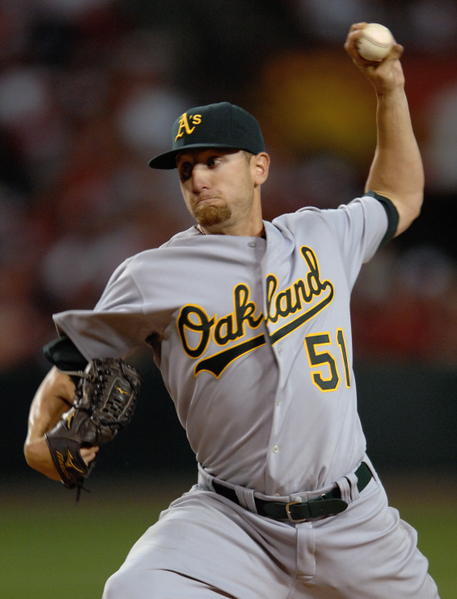 5. Dallas Braden, LHP, Free Agent: Perhaps the most unknown hurler of a perfect game, Dallas Braden made just three starts in 2011 and missed all of 2012 due to various arm injuries, the latest of which requiring rotator cuff surgery. The beauty of a guy like Braden is that he’ll have to settle for a very low salaried Major League deal or take a Minor League contract with an invite to Spring Training. In other words, low-risk, high-reward. He’s only going to be 30 next August.
5. Dallas Braden, LHP, Free Agent: Perhaps the most unknown hurler of a perfect game, Dallas Braden made just three starts in 2011 and missed all of 2012 due to various arm injuries, the latest of which requiring rotator cuff surgery. The beauty of a guy like Braden is that he’ll have to settle for a very low salaried Major League deal or take a Minor League contract with an invite to Spring Training. In other words, low-risk, high-reward. He’s only going to be 30 next August.
Who is he?: Braden is a former 24th round pick out of Texas Tech University who sits in the mid-to-upper 80s with his fastball, but mixes his pitches nicely with a vast assortment of breaking stuff. Like most of the other guys in this group, Braden largely pitches to contact and doesn’t walk a lot of hitters. He is more of a fly ball pitcher, so he could be a bit of an unknown outside of a pitcher’s park like
Appeal?: Braden put together a couple of solid seasons before succumbing to arm troubles and would be one of the more attainable pitchers on the market. If healthy, he would give the Indians a left hander to offset all of the righties and could have quite a bit of upside. Low-risk, high-reward.
Red flags?: Arm troubles could be a near certainty. It’s been two years since he’s really pitched in a Major League game, so rust is inevitable.
Verdict?: He’s not an ideal candidate, but it’s still better than paying $5-7M for a mediocre arm in the market.
These targets range from guaranteed solid pitcher (Marcum, Detwiler, Hellickson) to gambles (Zambrano, Braden), which is exactly how the Indians should approach this. A guy like Zambrano, even at 80% of his career, is better than Jimenez, Kluber, Gomez, and possibly even Carrasco. The ones who have a clearer outlook are going to cost more in money or trade assets, which is fine, as they are definite upgrades over what the Indians currently have.
They may not be household names, and they certainly aren’t the names that most Indians fans will suggest, but they are rational, attainable targets that are worthy of a lot of consideration.